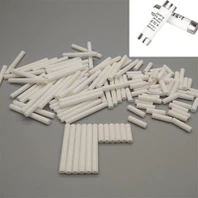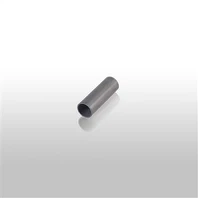Aluminum nitride (AlN) is a versatile compound with a wide range of unique properties. It is a ceramic material that exhibits excellent thermal conductivity, electrical insulation, and high-temperature stability. In this article, the various properties of aluminum nitride will be explored in detail.
Crystal Structure
Aluminum nitride crystallizes in the hexagonal wurtzite structure. It has a close-packed arrangement of aluminum and nitrogen atoms, forming strong covalent bonds within the crystal lattice.
Thermal Conductivity
One of the remarkable properties of aluminum nitride is its high thermal conductivity. It has thermal conductivity values ranging from 140 to 320 W/m·K, which is superior to most other ceramic materials. This high thermal conductivity makes it an excellent choice for heat sinks and substrates in electronic devices, where efficient heat dissipation is crucial.
Electrical Insulation
Aluminum nitride is an excellent electrical insulator. It has a high breakdown voltage and a low dielectric constant. These properties make it suitable for applications in high-power electronics, such as power modules and integrated circuits, where electrical isolation is essential.
Mechanical Strength
Despite being a ceramic material, aluminum nitride exhibits relatively high mechanical strength. It has a high elastic modulus, typically around 330 GPa, which makes it suitable for applications requiring structural integrity and resistance to mechanical stress.
Thermal Expansion
The coefficient of thermal expansion (CTE) of aluminum nitride is relatively low compared to other ceramics. It matches closely with that of silicon, which is important for achieving good thermal cycling reliability in electronic packaging applications where aluminum nitride is often used as a substrate.
Optical Properties
Aluminum nitride is transparent to ultraviolet (UV) light and exhibits a wide bandgap energy of about 6eV. This makes it useful for optoelectronic devices, such as UV light-emitting diodes (LEDs) and photodetectors.
Chemical Stability
Aluminum nitride is chemically stable in various environments, including oxidizing atmospheres. It is resistant to attack by most acids and alkalis, except for hydrofluoric acid (HF). This chemical stability makes it suitable for applications in harsh environments and as a protective coating for other materials.
Piezoelectricity
Aluminum nitride possesses piezoelectric properties, meaning it can generate an electric charge when subjected to mechanical stress or can change shape when an electric field is applied. This property makes it valuable for applications in sensors, actuators, and microelectromechanical systems (MEMS).
High-Temperature Stability
Aluminum nitride exhibits excellent stability at high temperatures. It can withstand temperatures up to 1000°C without significant degradation in its properties, making it suitable for applications in high-temperature environments, such as aerospace and automotive industries.
Chemical and Biological Sensing
Due to its high surface area and chemical stability, aluminum nitride is used in chemical and biological sensing applications. Its surface can be functionalized to selectively bind target molecules, enabling the detection of gases, liquids, and biomolecules.




